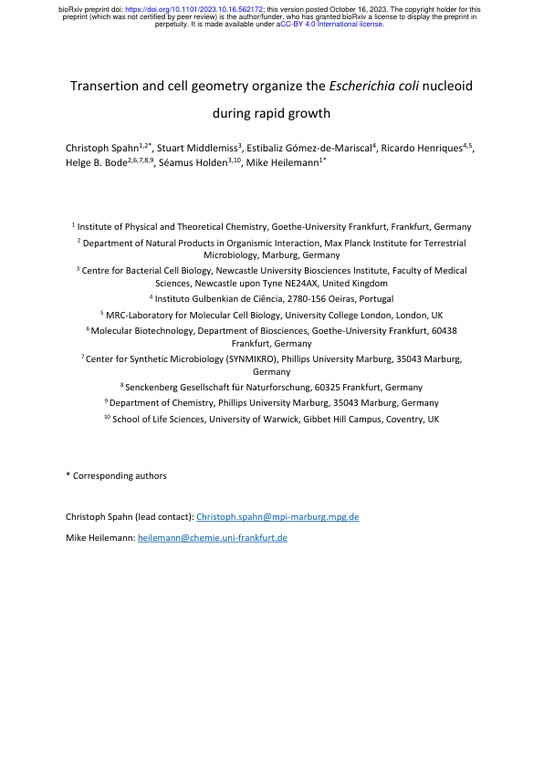Transertion and cell geometry organize the Escherichia coli nucleoid during rapid growth
Technologies: CARE (), DeepAutoFocus (), DeepBacs () and ZeroCostDL4Mic ()
Preprint published in bioRxiv, October 2023
Publisher: Cold Spring Harbor Laboratory

Bacterial chromosomes are spatiotemporally organized and sensitive to environmental changes. However, the mechanisms underlying chromosome configuration and reorganization are currently not fully understood. Using 3D single-molecule localization microscopy and live-cell imaging, we show that the Escherichia coli nucleoid adopts a condensed, membrane-associated configuration during rapid growth. To study the influence of different biosynthetic processes on nucleoid morphology and positioning, we recorded multi-colour super-resolution images during drug treatment. After developing analysis routines for confocal and super-resolution images, we captured highly resolved snapshots which revealed the complete loss of the membrane-bound state of the nucleoid within 10 minutes of halting transcription and translation. This indicates an active role of transertion (coupled transcription, translation and membrane insertion) in nucleoid organization. In contrast, cell wall synthesis inhibition only affects nucleoid organization during morphological changes. Further, we provide evidence that theE. colinucleoid spatially correlates with MreB in unperturbed E. coli cells, while this correlation diminishes in cells with changed cell geometry or upon inhibition of protein biosynthesis. Replication inhibition experiments, as well as multi-drug treatments highlight the role of entropic effects and transcription in nucleoid condensation and positioning. In summary, we provide experimental evidence for transertion as a principal organiser of the bacterial nucleoid, and show that an altered metabolic state and antibiotic treatment both lead to major changes in the degree of transertion and overall spatial organization of the nucleoid. Our high-resolution characterization reveals dynamics of antibiotic action and provides tools to quantify bacterial chromosome organization. This does not only provide valuable insights into the role of transertion, but can also be applied to study other cell-biological processes.